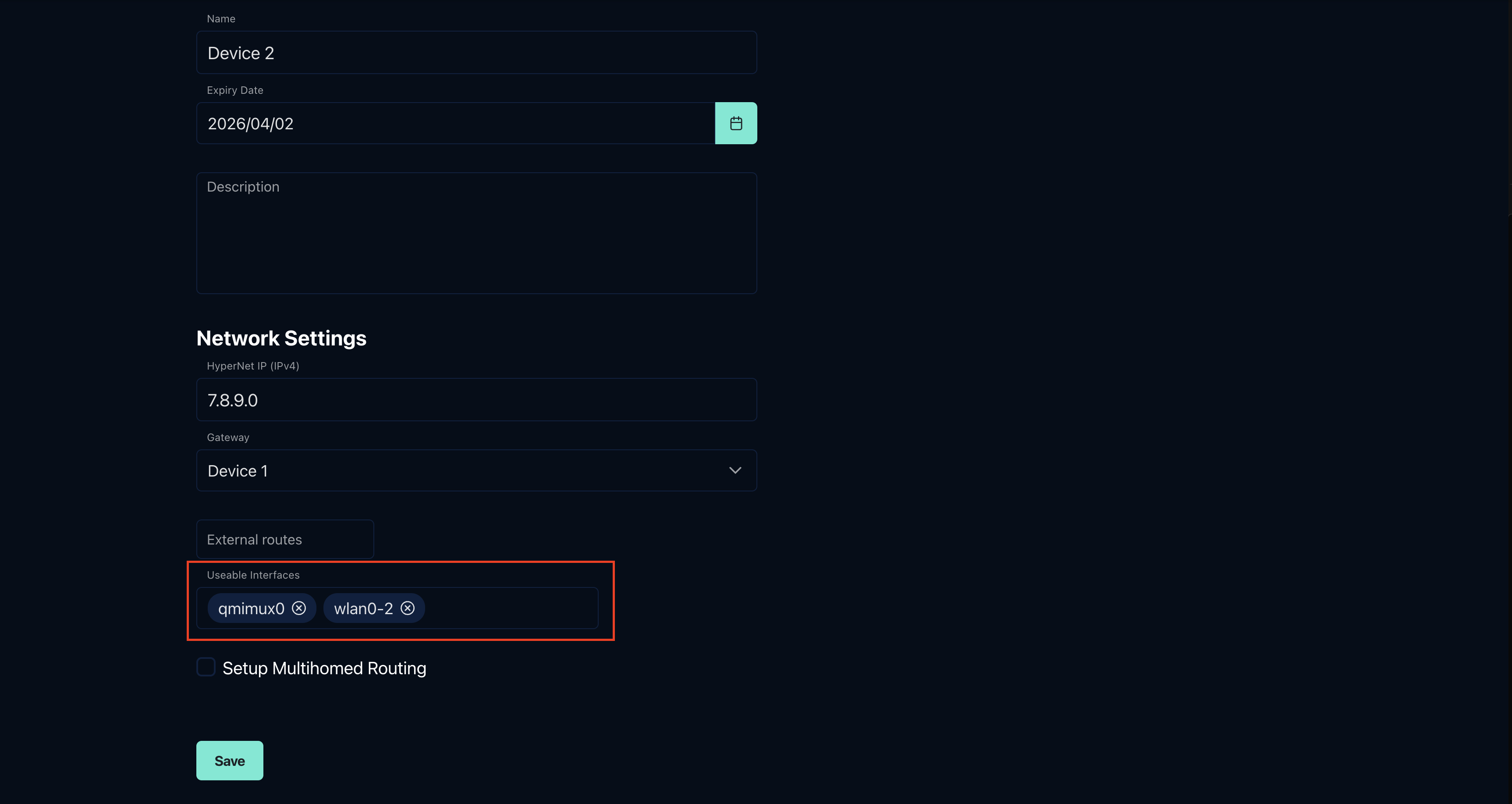Connecting HyperPath Nodes
How Nodes Connect
HyperPath nodes automatically establish connections in a full mesh topology - each node connects directly to every other node in your HyperNet. So once you have created 2 or more nodes with tokens from the same HyperNet, they will find each other and connect automatically.
To check if your nodes are connected, run the hyperpath status command on any node:
hyperpath status

Understanding the Status Output
The status command shows:
- Remote Nodes: Other nodes in your HyperNet this node has connected to
- Node IPs: Each node's assigned HyperNet IP address
- Channels: Active communication channels between nodes
- Channel Types: Direct P2P or relay-based connections
- Network Interfaces: Which interfaces are used for communication
Testing Connectivity
Test connection between nodes using ping:
ping <NODE_IP_ADDRESS>

Link Bonding for Better Performance
Link bonding allows HyperPath nodes to use multiple network interfaces simultaneously when communicating, combining their bandwidth for faster speeds and better reliability.
How It Works
Once two nodes are connected, a node with multiple network interfaces active and that has the useable_interfaces property set to allow for them to be used, will automatically create additional channels to the other node using different network interfaces.
This means that if you have, for example, a node with both an Ethernet and a Wi-Fi interface enabled, and the token configuration allows for both of them to be used, it will create two separate channels to the other node: one over Ethernet and one over Wi-Fi.
Configuring Link Bonding
To enable bonding, configure the Useable Interfaces parameter when creating your token:

Examples:
.*- Use all available interfaceseth.*- Use all ethernet interfaceseth0,wlan0- Use specific interfaces
Link bonding requires the "Enable Bonding Support" option to be enabled on your token. The number of tokens with bonding support depends on your license.
Bonding modes
HyperPath supports two bonding modes (not currently configurable):
- Capacity Aggregation (TCP): Dynamically splits packets across available channels to utilize maximum capacity
- Replication (UDP and other protocols): Replicates packets across all available channels to minimize packet loss and latency
Next Step
Now that your nodes are connected, let's explore connecting to non-HyperPath devices →